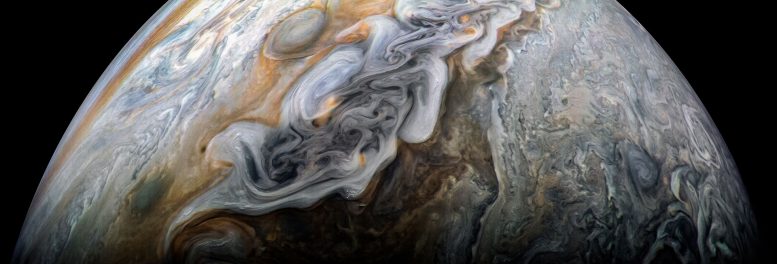
This image shows the intense jets and vortices in Jupiter’s North North Temperate Belt, which is the prominent reddish-orange band located to the left of the center. Credit: NASA/JPL-Caltech/SwRI/MSSS/Kevin M. Gill
This image captures the intensity of the jets and vortices in Jupiter’s North North Temperate Belt.
NASA’s Juno spacecraft took this color-enhanced image at 10:31 p.m. PDT on May 23, 2018 (1:31 a.m. EDT on May 24), as Juno performed its 13th close flyby of Jupiter. At the time, the spacecraft was about 4,900 miles (7,900 kilometers) from the tops of the clouds of the gas giant planet at a northern latitude of about 41 degrees. The view is oriented with south on Jupiter toward upper left and north toward lower right.
The North North Temperate Belt is the prominent reddish-orange band left of center. It rotates in the same direction as the planet and is predominantly cyclonic, which in the northern hemisphere means its features spin in a counter-clockwise direction. Within the belt are two gray-colored anticyclones.
To the left of the belt is a brighter band (the North North Temperate Zone) with high clouds whose vertical relief is accentuated by the low angle of sunlight near the terminator. These clouds are likely made of ammonia-ice crystals, or possibly a combination of ammonia ice and water. Although the region as a whole appears chaotic, there is an alternating pattern of rotating, lighter-colored features on the zone’s north and south sides.
Scientists think the large-scale dark regions are places where the clouds are deeper, based on infrared observations made at the same time by Juno’s JIRAM experiment and Earth-based supporting observations. Those observations show warmer, and thus deeper, thermal emission from these regions.
To the right of the bright zone, and farther north on the planet, Jupiter’s striking banded structure becomes less evident and a region of individual cyclones can be seen, interspersed with smaller, darker anticyclones.
Citizen scientist Kevin M. Gill created this image using data from the spacecraft’s JunoCam imager.

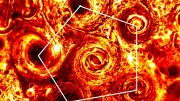
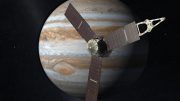
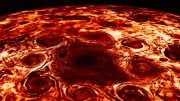
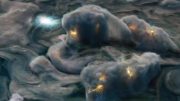
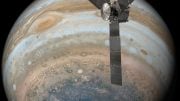
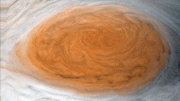
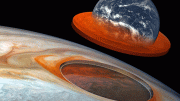
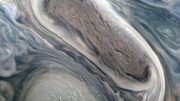
Be the first to comment on "NASA’s Juno Spacecraft Views a Dark and Stormy Jupiter"